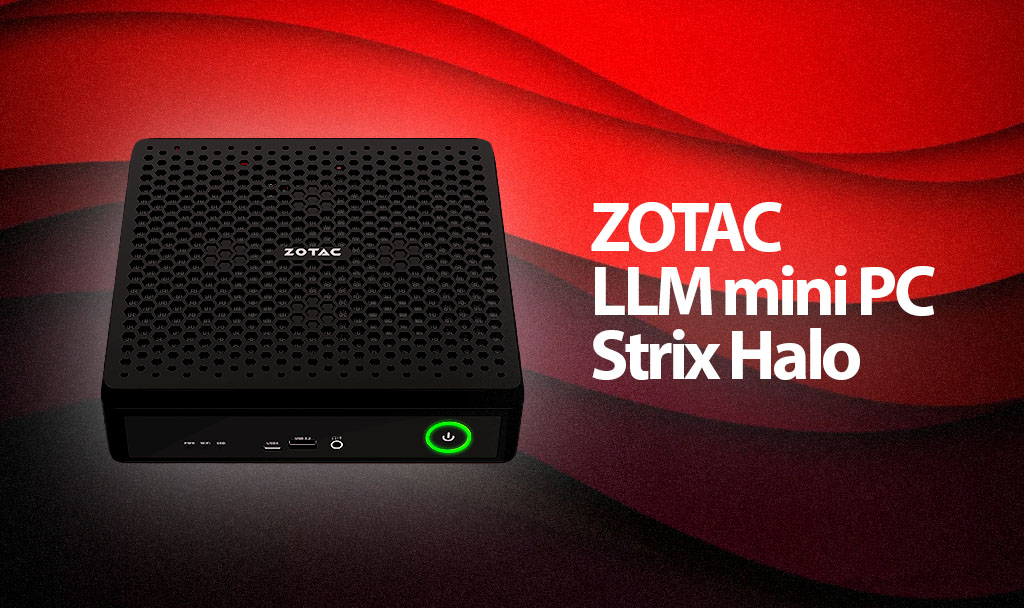Zotac Joins the Local LLM Race with Strix Halo Mini-PC — What You Need to Know

The small form factor (SFF) PC landscape for local large language model (LLM) inference is set to gain another contender, as Zotac has signaled its intent to launch the Magnus EA series, reportedly featuring AMD’s Ryzen AI MAX+ 395 “Strix Halo” APU, with an anticipated debut at Computex 2025. This development places Zotac alongside other manufacturers targeting price-conscious enthusiasts looking to run 100GB-class LLMs locally- without the complexity of multi-GPU setups.
Zotac Enters the Local LLM Arena with Magnus EA
While Zotac’s announcement for the upcoming Computex also detailes other new Mini-PCs, such as the Magnus EN with Intel Core Ultra and NVIDIA RTX 50-series graphics, it is the Magnus EA that will draw the attention of users focused on maximizing memory for LLM tasks in a compact, APU-driven system.
Strix Halo: Powering Compact Performance
Specifics for the Magnus EA remain sparse, but given the established capabilities of the Strix Halo platform, we can make some educated inferences. The platform’s key attraction for LLM work is its support for substantial system memory that can be flexibly allocated to the integrated GPU. Following the trend set by recently announced systems like the Beelink GTR9 Pro AI and the FAVM FX-EX9, it is highly probable that Zotac will offer configurations of the Magnus EA with up to 128GB of LPDDR5X memory. Such a capacity would allow users to allocate a significant portion, potentially up to 110GB on Linux, as VRAM – a critical factor for loading larger quantized models, such as 70B parameter variants, entirely into memory.
The Ryzen AI MAX “Strix Halo” APUs, as seen in other announced products like the GMKtec EVO-X2, feature a 256-bit LPDDR5X memory interface, which translates to approximately 256 GB/s of memory bandwidth. While this is a considerable figure for an integrated solution and a significant step up from traditional DDR5 setups, it remains a key performance differentiator compared to discrete GPU solutions.
For instance, even a mainstream card like the NVIDIA RTX 3060 12GB offers 360 GB/s, and higher-end cards provide substantially more. This bandwidth will directly influence token generation speeds, particularly with larger models, likely placing the Magnus EA in a similar performance bracket to its Strix Halo-based peers, which are anticipated to deliver functional, albeit not record-breaking, inference speeds for models in the 70B_q4 class.
What Will Define the Magnus EA’s Success?
The ultimate viability of the Zotac Magnus EA for the LLM enthusiast will hinge on its final specifications, thermal management within its presumed SFF chassis, and, crucially, its price point.
The market for Strix Halo mini-PCs is becoming more defined, with competitors targeting a range roughly between $1,800 and $2,000 for 128GB configurations. Zotac’s positioning within or below this range will be critical for its appeal, especially as users weigh the convenience and power efficiency of an APU-based system against the potentially higher raw performance-per-dollar of custom builds using multiple new or second-hand discrete GPUs.
The inclusion of features like an OCuLink port, as seen on the FAVM FX-EX9, could also enhance its attractiveness by offering an upgrade path through external GPU enclosures, though it’s currently unknown if the Magnus EA will incorporate such connectivity. As more details emerge closer to its 2025 launch, a clearer picture of the Magnus EA’s value proposition for local LLM will form.
Leave a Reply
No comments yet.




